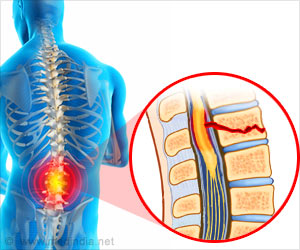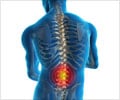Newly invented robotic trunk support can assist patients with spinal cord injury (SCI) to sit more stably and gain an expanded active sitting workspace.

‘Newly invented robotic trunk-support-trainer can assist patients with spinal cord injury (SCI) to sit more stably and gain an expanded active sitting workspace.’
Read More..




In addition, the rate of SCIs in people 65-years or older is expected to rise in the US, from 13.0% in 2010 to 16.1% by 2020. Data also shows a high survival rate for these patients, who need to function in everyday life but find sitting to be a major challenge.Read More..
A Columbia Engineering team has invented a robotic device--the Trunk-Support Trainer (TruST)--that can be used to assist and train people with SCIs to sit more stably by improving their trunk control, and thus gain an expanded active sitting workspace without falling over or using their hands to balance. The study, published in Spinal Cord Series and Cases, is the first to measure and define the sitting workspace of patients with SCI based on their active trunk control.
"We designed TruST for people with SCIs who are typically wheelchair users," says Sunil Agrawal, the project's PI and professor of mechanical engineering and of rehabilitation and regenerative medicine. "We found that TruST not only prevents patients from falling, but also maximizes trunk movements beyond patients' postural control, or balance limits."
TruST is a motorized-cable driven belt placed on the user's torso to determine the postural control limits and sitting workspace area in people with SCI. It delivers forces on the torso when the user performs upper body movements beyond the postural stability limits while sitting.
The five subjects with SCI who participated in the pilot study were examined with the Postural Star-Sitting Test, a customized postural test that required them to follow a ball with their head and move their trunk as far as possible, without using their hands. The test was repeated in eight directions, and the researchers used the results to compute the sitting workspace of each individual.
Advertisement
"The capacity of TruST to deliver continuous force-feedback personalized for the user's postural limits opens new frontiers to implement motor learning-based paradigms to retrain functional sitting in people with SCI," says Victor Santamaria, a physical therapist, postdoctoral researcher in Agrawal's Robotics and Rehabilitation Laboratory, and first author of the paper. "We think TruST is a very promising SCI rehab tool."
Advertisement
Source-Eurekalert














